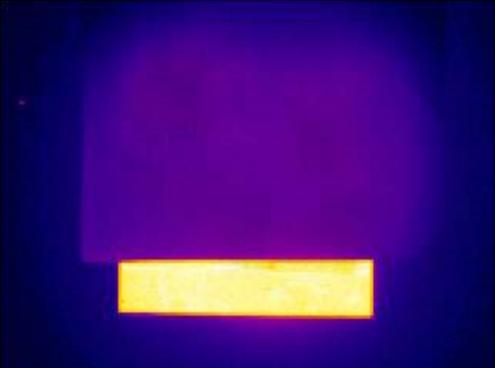
Credit: American Chemical Society
Hiding an object from heat-sensing cameras could be useful for military and technology applications as well as for research. Efforts to develop such a method have been underway for decades with varying degrees of success. Now, researchers report in ACS Nano that they have fabricated an inexpensive, easy-to-produce film that makes objects completely invisible to infrared detectors.
Several prior systems have been developed to mask the difference in temperature between an object and its surroundings. But each of these alternatives has weaknesses, such as difficulty in making the devices, the need for a power supply, the use of rigid materials or the addition of thick and heavy thermal blankets that can lead to heat buildup. Xuetong Zhang and colleagues wanted to find a better way.
The researchers fabricated an aerogel film made of DuPont™ Kevlar® fibers. By itself, the aerogel turned out to be a good thermal insulator, but the researchers enhanced its capabilities by coating its fibers with polyethylene glycol (PEG) and a protective waterproof layer. PEG stores heat when it melts and releases heat when it solidifies. In simulated sunlight, the composite film covering an object soaked up heat from the sun while only slowly increasing in temperature, just like the surroundings, making the object invisible to a thermal camera. When the light was turned off to simulate night, the coating gradually surrendered its stored heat energy to match the surroundings. Without the coating, the object heated up or cooled off much faster than its environment, making it visible. In a second type of application, a combined structure consisting of aerogel films and the PEG composite film could hide hot targets from a thermal camera. The researchers say their film performs comparably to other stealth films but is simpler and cheaper to make.
###
The authors acknowledge funding from the National Natural Science Foundation of China, the National Key Research and Development Program of China, the Royal Society Newton Advanced Fellowship, the Natural Science Foundation of Jiangsu Province, China Postdoctoral Science Foundation and Jiangsu Planned Projects for Postdoctoral Research Funds.
DuPont™ and Kevlar® are trademarks or registered trademarks of E.I. du Pont de Nemours.
The study is freely available as an ACS Editors’ Choice article here.
The American Chemical Society, the world’s largest scientific society, is a not-for-profit organization chartered by the U.S. Congress. ACS is a global leader in providing access to chemistry-related information and research through its multiple databases, peer-reviewed journals and scientific conferences. ACS does not conduct research, but publishes and publicizes peer-reviewed scientific studies. Its main offices are in Washington, D.C., and Columbus, Ohio.
To automatically receive news releases from the American Chemical Society, contact [email protected].
Follow us on Twitter | Facebook
Media Contact
Katie Cottingham
[email protected]



